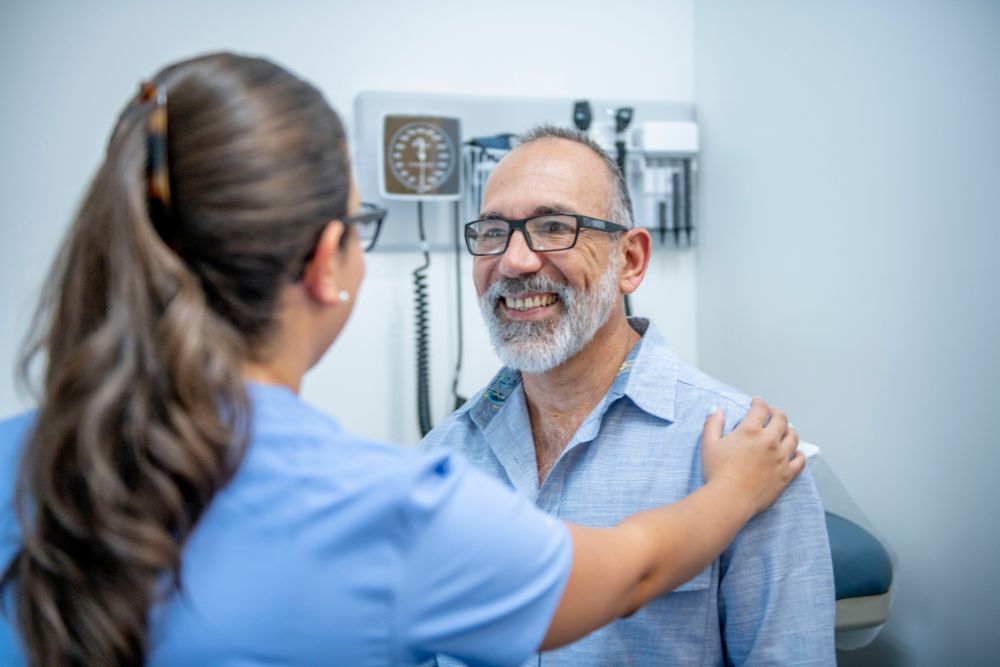March Is Save Your Vision Month: 6 Tips to Protect Your Vision

March is designated as Save Your Vision Month, and it serves as a good time to take stock of what you’re doing to protect your vision. The primary goal of this observance is to encourage people, especially older and at-risk individuals, to get regular dilated eye exams, which is the best way to safeguard eye and vision health. Following certain lifestyle changes can also help minimize your risks whether you’re at home or on the go.
1. The Significance of Comprehensive Eye Exams
Getting regular dilated eye exams make it possible for your eye doctor to quickly diagnose eye and vision problems. Whether you’re experiencing vision problems or not, regular exams are especially important for anyone who is at risk for developing an eye disease, like age-related macular degeneration (AMD). A dilated eye exam, which provides an unobstructed view of the back of the eye, is the only method to identify these issues in their early stages, which is when they’re easiest to manage.
2. Ensure Your General Health
When it comes to vision health, it’s important to properly manage any chronic conditions, particularly diabetes and high blood pressure, as they’ve been found to increase risks for such eye diseases as diabetic retinopathy and glaucoma. Your doctor can discuss steps to manage your condition(s) and reduce your risk of vision loss. This will include maintaining healthy blood sugar levels, blood pressure, and cholesterol.
3. Stick to an Eye-Healthy Diet
You can help support your eye and vision health by consuming a healthy diet, one with a diverse selection of fruits and vegetables, such as dark leafy greens. You should also eat foods rich in omega-3 fatty acids, like oily fish, as they may promote visual development and retinal health. Other nutrients shown to support vision include vitamins C, D, and E, the minerals copper and zinc, and carotenoids (plant-based, organic pigments) like lutein and zeaxanthin.
4. Avoid Smoking
Smoking is associated with increased risks for multiple vision conditions, including AMD and cataracts. The harmful chemicals that are inhaled through tobacco cause significant damage throughout the body, including the blood vessels and cells of the eye. It can also increase your risk of high blood pressure, which is another risk factor for many eye diseases. If you are a smoker and are having difficulties quitting, talk to your doctor about smoking cessation resources.
5. Exercise and Weight Management Are Vital
Engaging in regular physical activity helps to maintain a healthy weight, and lower risks for diabetes and other conditions that could impact your vision. It doesn’t have to be intensive – simply 30 minutes a day of walking has been shown to improve health dramatically.
6. Protect Your Eyes
To shield your eyes from potential damage, wear protective eyewear, like safety glasses or goggles, when working, doing tasks around the home, or playing sports. You should always protect your eyes from the sun’s ultraviolet rays (both UVA and UVB), even when it’s cloudy outdoors, with sunglasses that block 99%-100% of UVA and UVB rays.
It’s also a good idea to rest your eyes, especially if you spend a lot of time staring at a computer or TV screen. You may want to try the “20-20-20 rule,” in which every 20 minutes, you look away, about 20 feet in front of you, for 20 seconds. Be sure to get up at least every 2 hours for a 15-minute break.
Schedule a Consultation for Vision Health In New York
By getting regular dilated eye exams, and by following certain health-related and lifestyle measures, you can ensure your continued vision health. If you live in Long Island or Queens, NY, contact the retina specialists of Vitreoretinal Consultants NY for a comprehensive eye exam.


